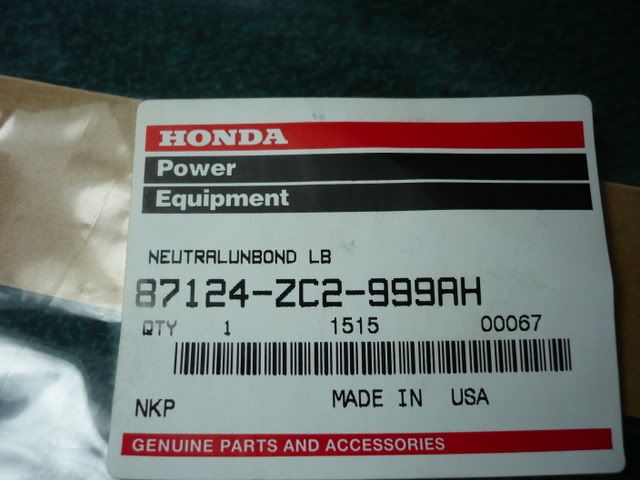mdshunk
Senior Member
- Location
- Right here.
A thread the other day rang a bell about some of the portable generators used for backup power to homes. They're typically wheeled or man-carried types removed from a storage space and plugged into an inlet on the outside of the home to provide power during outages. Some of these generators, Honda and Arctic Cat in particular, are neutral bonded to the frame at the generator. Since these generators GFCI protect every receptacle, and your service at the home is also neutral bonded, the GFCI will immediately trip. For that reason, Honda and the other similar generator manufacturers ask you to remove the neutral-to-frame bonding strap at the generator. They also ask you to affix a sticker indicating that this procedure was done. How's this square with the NEC? I seem to think it's fine, as long as the neutral is not switched by the transfer equipment.
Find attached images of the Honda sticker to be affixed when the neutral to frame bond is removed, and an attached PDF of Honda Service Bulletin #20, which outlines the simple procedure to remove the bonding jumper. This bulletin is sorta hard to come by, and might be something to print out and keep on your truck if you do service.


Find attached images of the Honda sticker to be affixed when the neutral to frame bond is removed, and an attached PDF of Honda Service Bulletin #20, which outlines the simple procedure to remove the bonding jumper. This bulletin is sorta hard to come by, and might be something to print out and keep on your truck if you do service.



